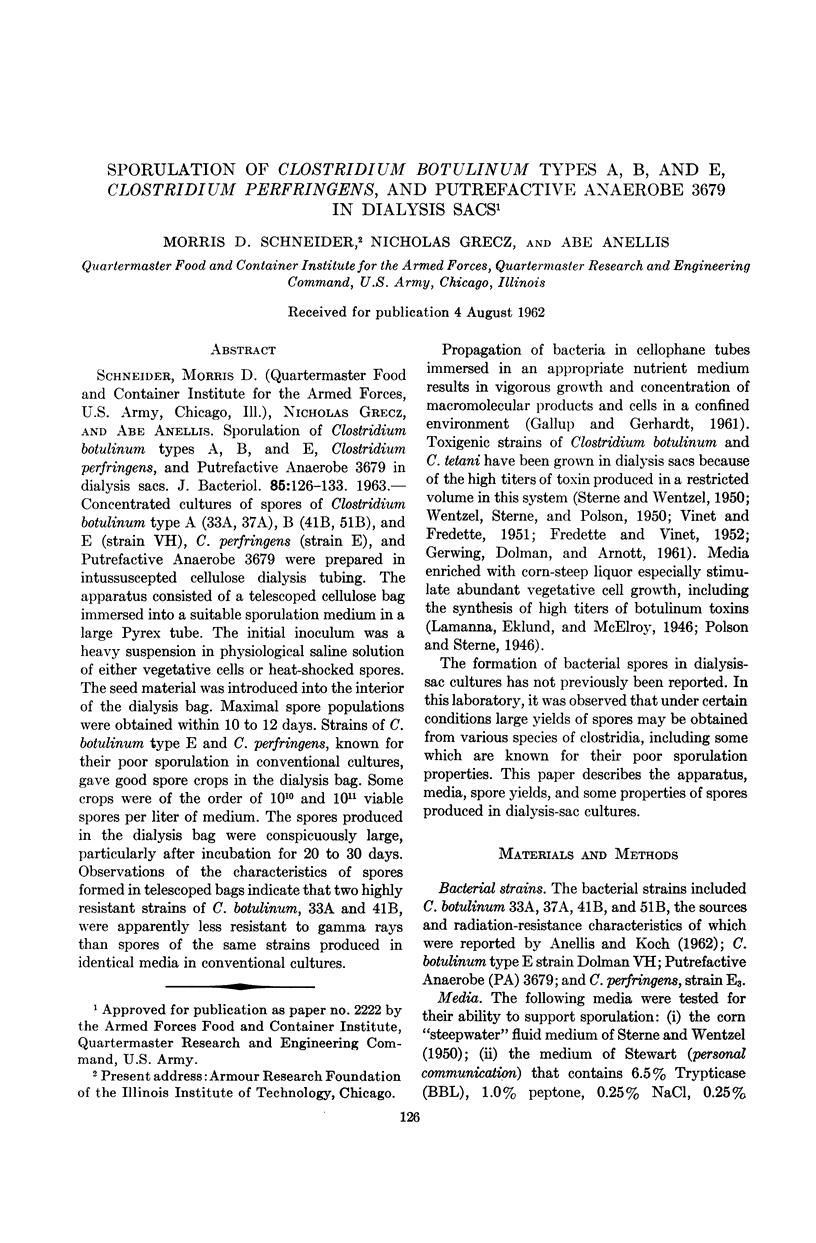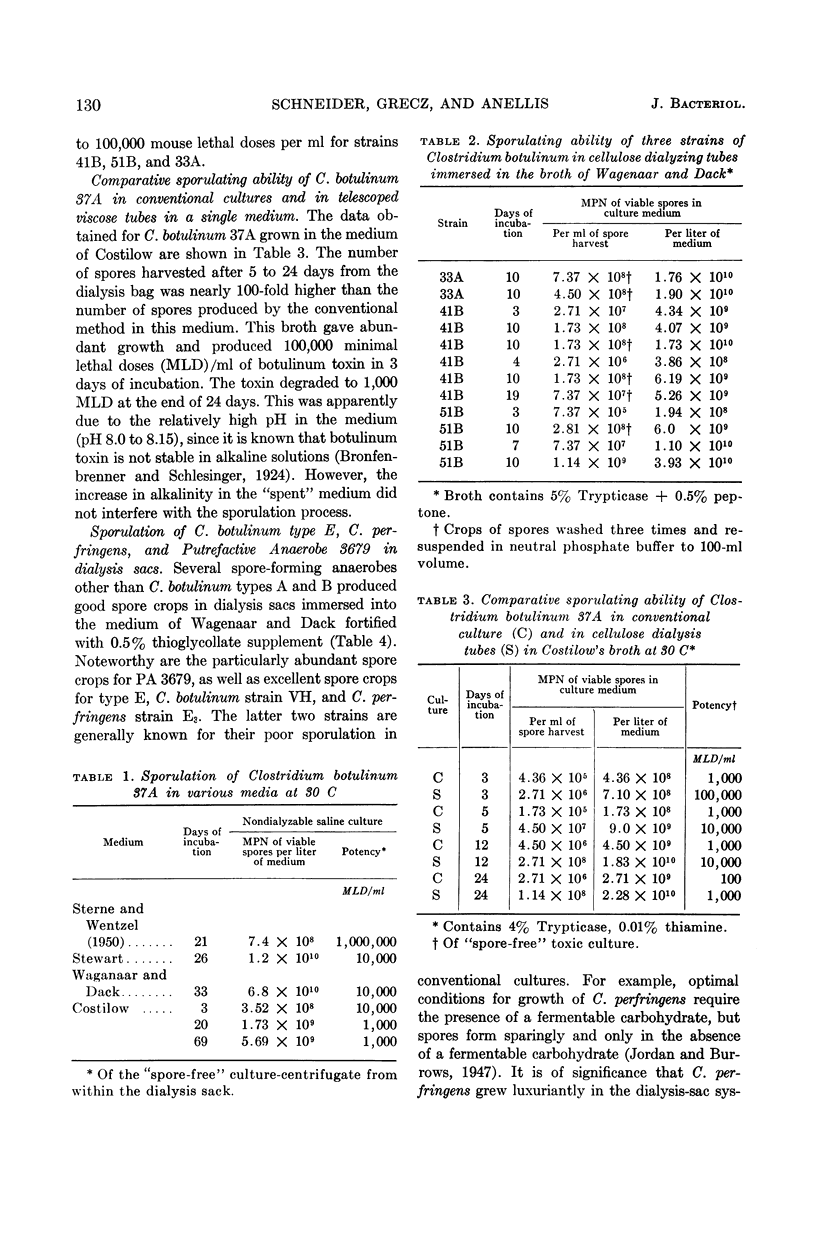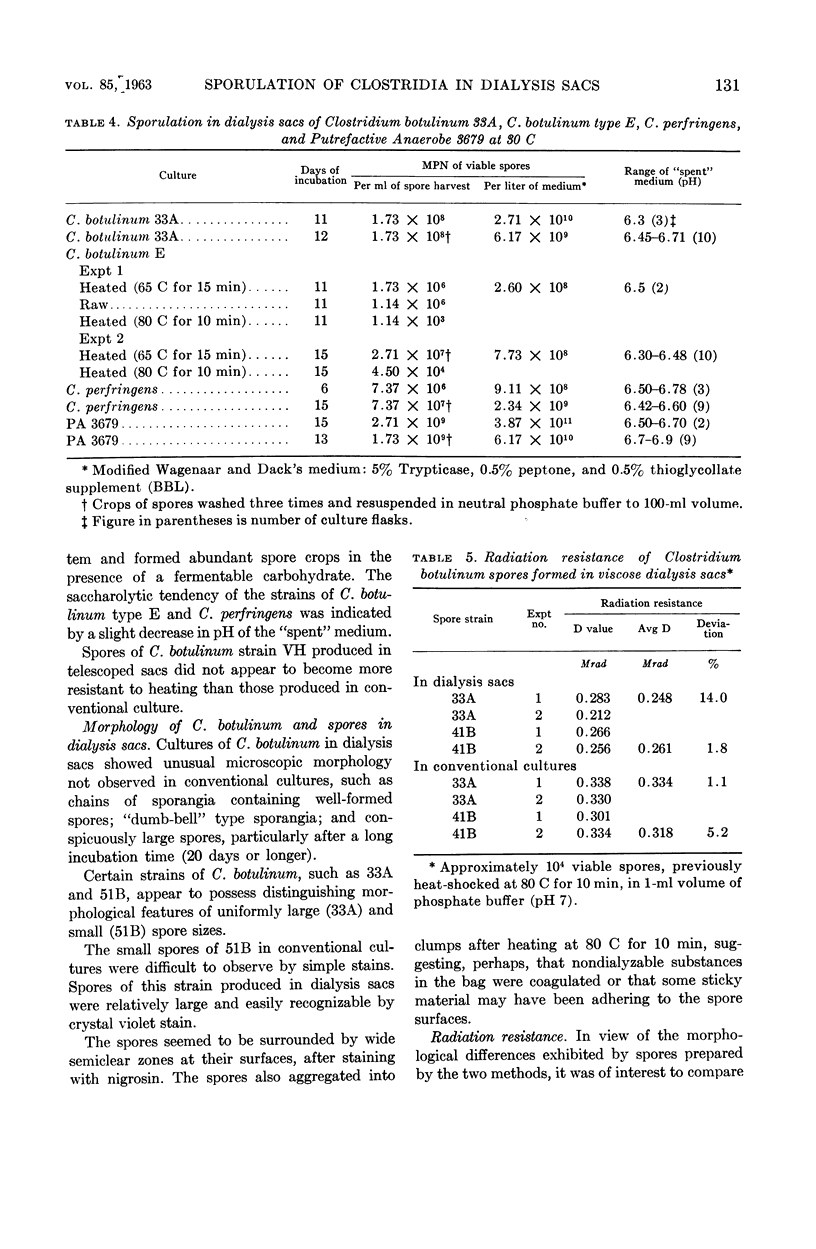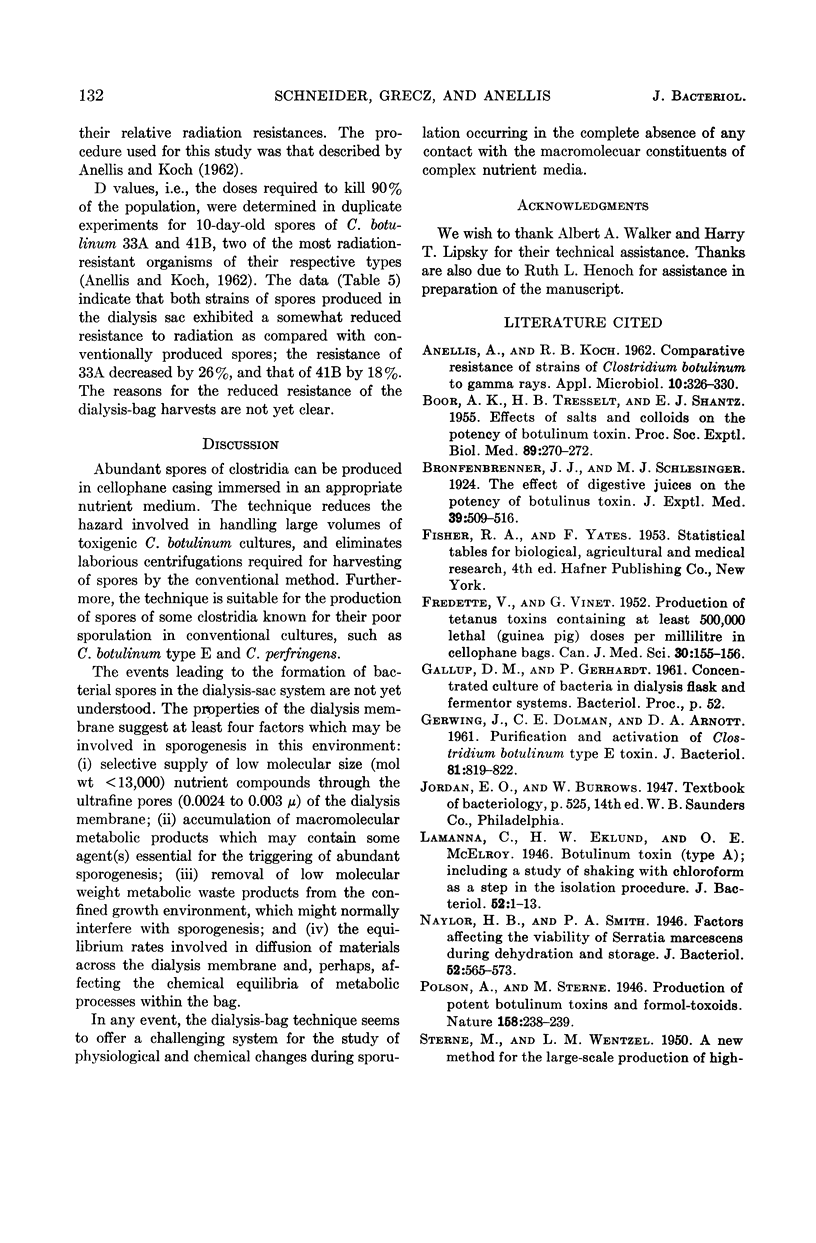Abstract
Schneider, Morris D. (Quartermaster Food and Container Institute for the Armed Forces, U.S. Army, Chicago, Ill.), Nicholas Grecz, and Abe Anellis. Sporulation of Clostridium botulinum types A, B, and E, Clostridium perfringens, and Putrefactive Anaerobe 3679 in dialysis sacs. J. Bacteriol. 85:126–133. 1963.—Concentrated cultures of spores of Clostridium botulinum type A (33A, 37A), B (41B, 51B), and E (strain VH), C. perfringens (strain E), and Putrefactive Anaerobe 3679 were prepared in intussuscepted cellulose dialysis tubing. The apparatus consisted of a telescoped cellulose bag immersed into a suitable sporulation medium in a large Pyrex tube. The initial inoculum was a heavy suspension in physiological saline solution of either vegetative cells or heat-shocked spores. The seed material was introduced into the interior of the dialysis bag. Maximal spore populations were obtained within 10 to 12 days. Strains of C. botulinum type E and C. perfringens, known for their poor sporulation in conventional cultures, gave good spore crops in the dialysis bag. Some crops were of the order of 1010 and 1011 viable spores per liter of medium. The spores produced in the dialysis bag were conspicuously large, particularly after incubation for 20 to 30 days. Observations of the characteristics of spores formed in telescoped bags indicate that two highly resistant strains of C. botulinum, 33A and 41B, were apparently less resistant to gamma rays than spores of the same strains produced in identical media in conventional cultures.
Full text
PDF







Images in this article
Selected References
These references are in PubMed. This may not be the complete list of references from this article.
- ANELLIS A., KOCH R. B. Comparative resistance of strains of Clostridium botulinum to gamma rays. Appl Microbiol. 1962 Jul;10:326–330. doi: 10.1128/am.10.4.326-330.1962. [DOI] [PMC free article] [PubMed] [Google Scholar]
- BOOR A. K., TRESSELT H. B., SCHANTZ E. J. Effects of salts and colloids on potency of botulinum toxin. Proc Soc Exp Biol Med. 1955 Jun;89(2):270–272. doi: 10.3181/00379727-89-21780. [DOI] [PubMed] [Google Scholar]
- FREDETTE V., VINET G. Production en sac de cellophane de toxines tétaniques renfermant au moins 600,000 doses mortelles (cobaye) par millilitre. Can J Med Sci. 1952 Apr;30(2):155–156. [PubMed] [Google Scholar]
- GERWING J., DOLMAN C. E., ARNOTT D. A. Purification and activation of Clostridium botulinum type E toxin. J Bacteriol. 1961 May;81:819–822. doi: 10.1128/jb.81.5.819-822.1961. [DOI] [PMC free article] [PubMed] [Google Scholar]
- Lamanna C., Eklund H. W., McElroy O. E. Botulinum Toxin (Type A); Including a Study of Shaking with Chloroform as a Step in the Isolation Procedure. J Bacteriol. 1946 Jul;52(1):1–13. [PMC free article] [PubMed] [Google Scholar]
- Naylor H. B., Smith P. A. Factors Affecting the Viability of Serratia marcescens During Dehydration and Storage. J Bacteriol. 1946 Nov;52(5):565–573. doi: 10.1128/jb.52.5.565-573.1946. [DOI] [PMC free article] [PubMed] [Google Scholar]
- STERNE M., WENTZEL L. M. A new method for the large-scale production of high-titre botulinum formol-toxoid types C and D. J Immunol. 1950 Aug;65(2):175–183. [PubMed] [Google Scholar]
- VINET G., FREDETTE V. Apparatus for the culture of bacteria in cellophane tubes. Science. 1951 Nov 23;114(2969):549–550. doi: 10.1126/science.114.2969.549. [DOI] [PubMed] [Google Scholar]
- WENTZEL L. M., STERNE M., POLSON A. High toxicity of pure botulinum type D toxin. Nature. 1950 Oct 28;166(4226):739–740. doi: 10.1038/166739b0. [DOI] [PubMed] [Google Scholar]



